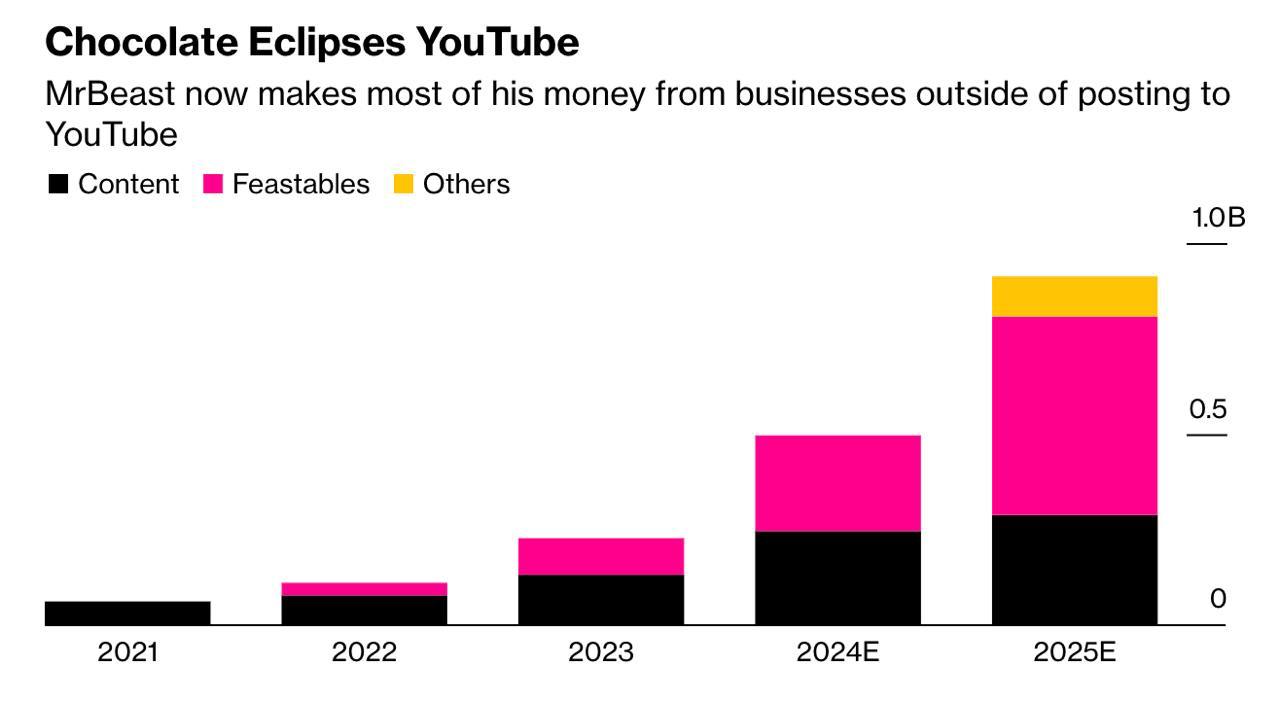The meteoric rise of Jimmy Donaldson, better known as MrBeast, is a case study in what true success looks like in the creator economy.
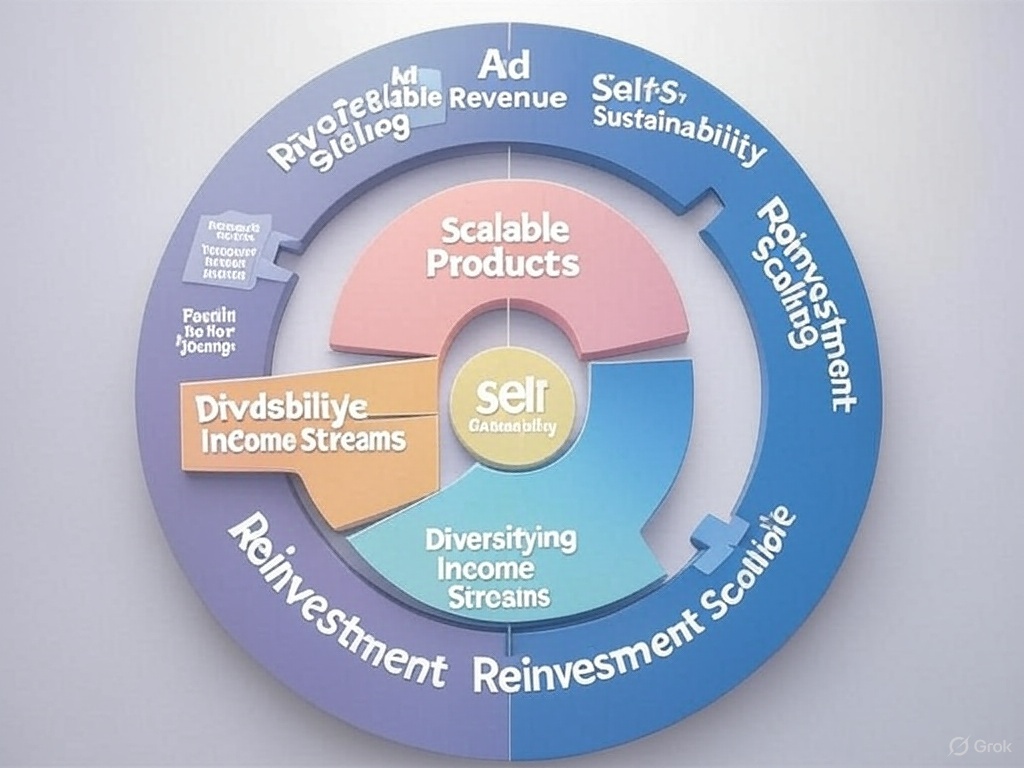 A recent Bloomberg chart, summarizing the financial performance of MrBeast’s business empire, vividly illustrates the trajectory of a creator who has transcended the traditional content grind to build a self-sustaining, diversified conglomerate.
A recent Bloomberg chart, summarizing the financial performance of MrBeast’s business empire, vividly illustrates the trajectory of a creator who has transcended the traditional content grind to build a self-sustaining, diversified conglomerate.
The numbers tell a compelling story: Beast Industries, MrBeast’s holding company, generated $473 million in revenue in 2024 and is projected to double that in 2025. This isn’t just a YouTube channel — it’s a masterclass in leveraging creative influence into a scalable, independent business empire.
The Creator Economy Ladder: From Content to Conglomerate
The creator economy, valued at over $250 billion globally, is a dynamic ecosystem where individuals monetize their content, skills, and audiences. Yet, most creators remain stuck at the first rung of the ladder: generating ad revenue from their content. MrBeast’s journey, however, shows what’s possible when you climb higher.
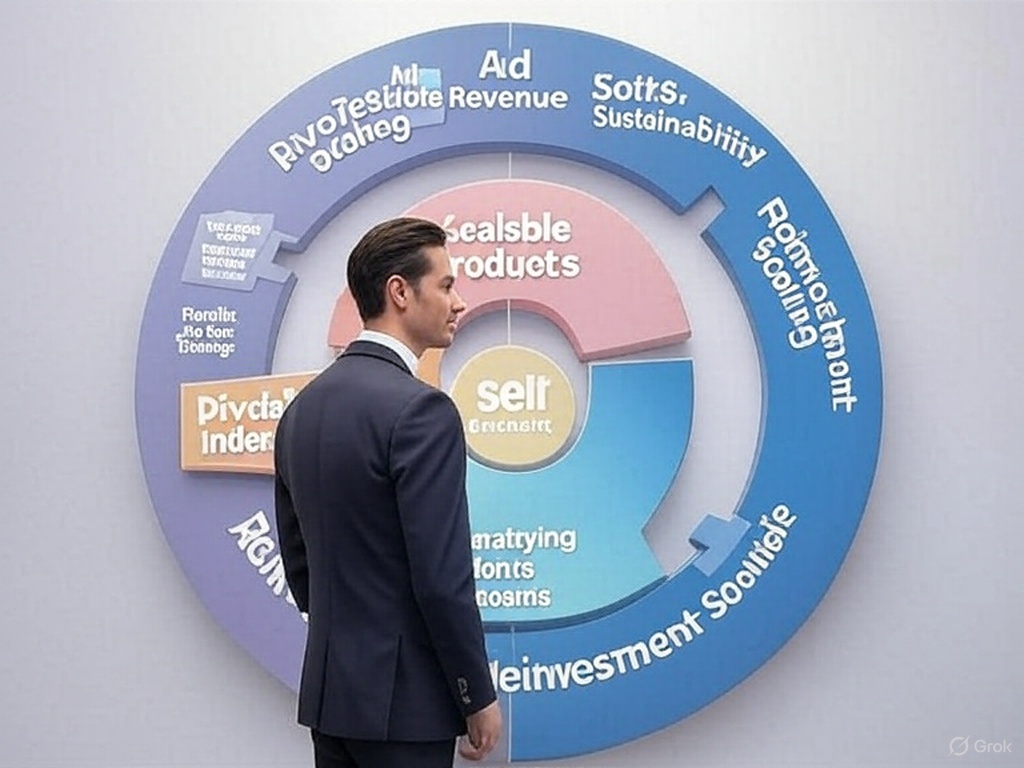 His success follows a clear, replicable framework:
His success follows a clear, replicable framework:
- Ad Revenue as the Springboard: The foundation of MrBeast’s empire is his ability to generate massive viewership — 3.6 billion YouTube views in just 28 days, according to recent data. This translates into substantial ad revenue, which most creators rely on as their primary income source. For MrBeast, this was just the starting point.
- Launching Scalable Products: With ad revenue as a financial cushion, MrBeast ventured into new businesses, such as Feastables, his snack brand. Unlike content creation, which demands constant personal involvement, products like chocolate bars can scale without tying up a creator’s time. Feastables alone is a significant revenue driver, reportedly outperforming his video earnings in some projections.
- Achieving Self-Sustainability: The key milestone in MrBeast’s model is building businesses that become self-sustaining. Feastables, for instance, operates independently of his personal brand’s day-to-day content output. This decoupling allows the business to generate stable, predictable income, reducing reliance on the volatility of ad revenue or algorithmic changes.
- Diversifying Income Streams: Once businesses reach self-sustainability, they become the backbone of the empire. This stability enables MrBeast to reinvest profits, attract external funding (like the $200 million raise at a $5 billion valuation), and launch additional ventures. His portfolio now includes not just Feastables but also mobile apps, merchandise, and other media projects.
- Scaling Through Reinvestment: With a diversified revenue base, MrBeast can focus on innovation rather than survival. Each successful venture provides capital and credibility to fund the next, creating a virtuous cycle of growth. This is where most creators falter — but it’s where MrBeast excels.
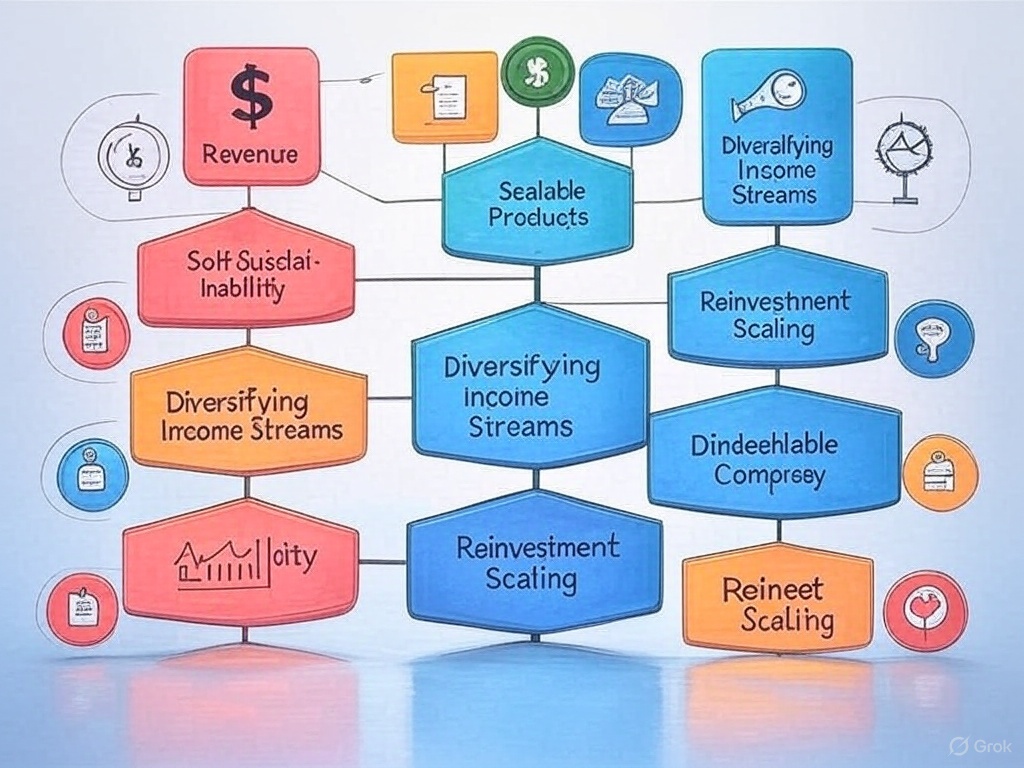 Also read:
Also read:
- BuzzFeed’s Jonah Peretti Aims to Launch a New Social Network to “Make the Internet Fun Again”
- The Battle for Creative Control: How Blogilates’ Cassey Ho Took on a Retail Giant
- Nick DiGiovanni’s YouTube Subathon: A Recipe for Record-Breaking Success
Why Most Creators Get Stuck
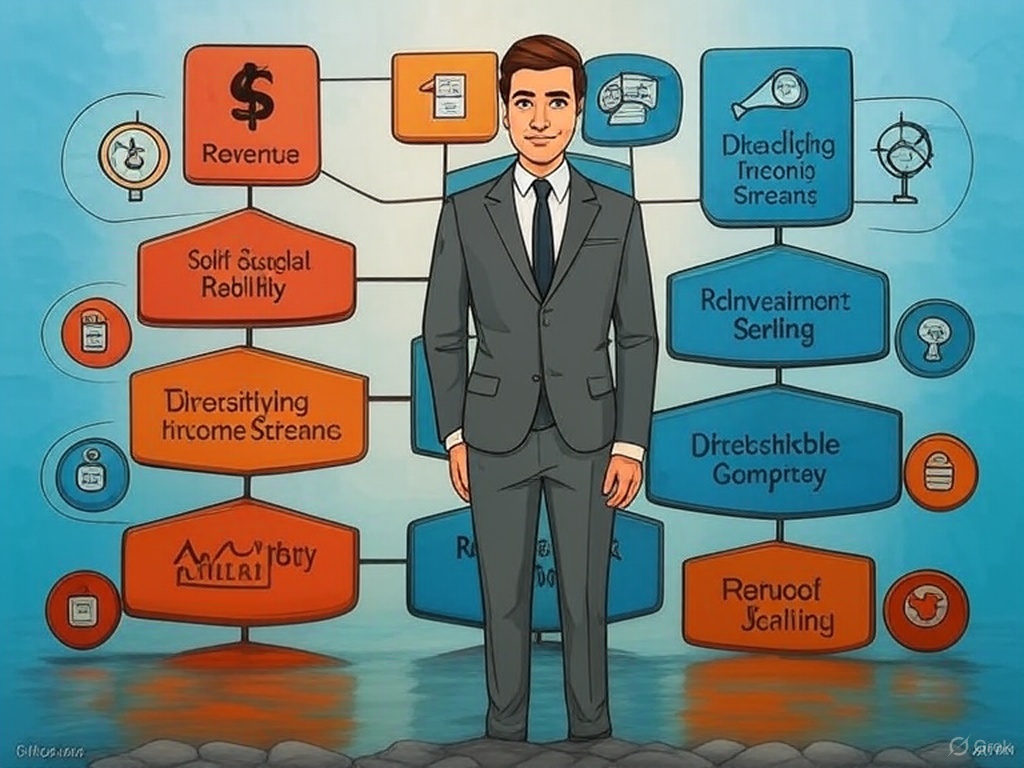 The Bloomberg chart underscores a harsh reality: while millions of creators are active in the economy, only a fraction progress beyond the first or second stage. According to SignalFire, there are over 50 million creators worldwide, but just 2 million make a full-time living from it. The majority remain trapped in a cycle of content creation, chasing ad revenue or sporadic brand deals.
The Bloomberg chart underscores a harsh reality: while millions of creators are active in the economy, only a fraction progress beyond the first or second stage. According to SignalFire, there are over 50 million creators worldwide, but just 2 million make a full-time living from it. The majority remain trapped in a cycle of content creation, chasing ad revenue or sporadic brand deals.
The leap from content creator to business builder is daunting. Many creators are creative perfectionists, deeply invested in their craft. This mindset, while essential for producing compelling content, can hinder the transition to entrepreneurship.
Building a business requires delegating creative control, embracing operational complexity, and learning from failures—skills that don’t always come naturally to artists or influencers.
Moreover, the creator economy is inherently a “winner-takes-all” market. Power-law distributions mean a small number of creators capture the majority of attention and income. For example, while top OnlyFans creators earn up to $100,000 a month, the median is just $180. This disparity discourages many from investing in long-term business strategies, as immediate survival often takes precedence.
 Also read:
Also read:
- How to Choose the Perfect YouTube Thumbnail: The Power of Emotions
- Spotify’s Loud and Clear Report: A Rosy Picture Amid Royalty Controversies
- The Streaming Industry’s Strategic Pivot: Profit Over Subscriptions
The MrBeast Playbook: Lessons for Aspiring Creators
 MrBeast’s success offers actionable insights for creators aiming to break free from the content treadmill:
MrBeast’s success offers actionable insights for creators aiming to break free from the content treadmill:
- Monetize Beyond Ads: Ad revenue is a starting point, not an endgame. Explore scalable products or services—whether it’s merchandise, digital courses, or physical goods — that can operate independently of your personal time.
- Build Systems, Not Side Hustles: Treat your ventures as businesses, not extensions of your personal brand. Invest in teams, processes, and infrastructure to ensure they can run without your constant oversight.
- Learn Through Failure: The transition from creator to entrepreneur is fraught with mistakes. MrBeast’s early ventures, like his burger chain, faced challenges, but each taught him how to refine his approach. Embrace experimentation as a learning tool.
- Diversify Strategically: Don’t spread yourself thin across unrelated projects. Focus on ventures that align with your audience and expertise, as MrBeast did with Feastables, which leverages his brand’s appeal to younger demographics.
- Attract Capital: Once your businesses show traction, external funding can accelerate growth. MrBeast’s $200 million raise demonstrates how proven revenue streams can attract investors, providing the fuel for further expansion.
The Future of the Creator Economy
 MrBeast’s empire is a glimpse into the future of the creator economy, where the most successful players are not just content creators but business moguls. As the industry matures—projected to reach $480 billion by 2027—creators who adopt this mindset will thrive.
MrBeast’s empire is a glimpse into the future of the creator economy, where the most successful players are not just content creators but business moguls. As the industry matures—projected to reach $480 billion by 2027—creators who adopt this mindset will thrive.
The White House’s recent creator economy event, which addressed issues like privacy, fair pay, and AI, signals that this sector is no longer a niche but a mainstream economic force.
For every creator grinding away at content, MrBeast’s journey is both an inspiration and a challenge. The path to building a self-sustaining business is arduous, requiring a shift from creative perfectionism to entrepreneurial pragmatism. Yet, as the Bloomberg chart shows, those who master this transition can redefine what it means to succeed in the creator economy—not just as influencers, but as architects of enduring, impactful empires.

